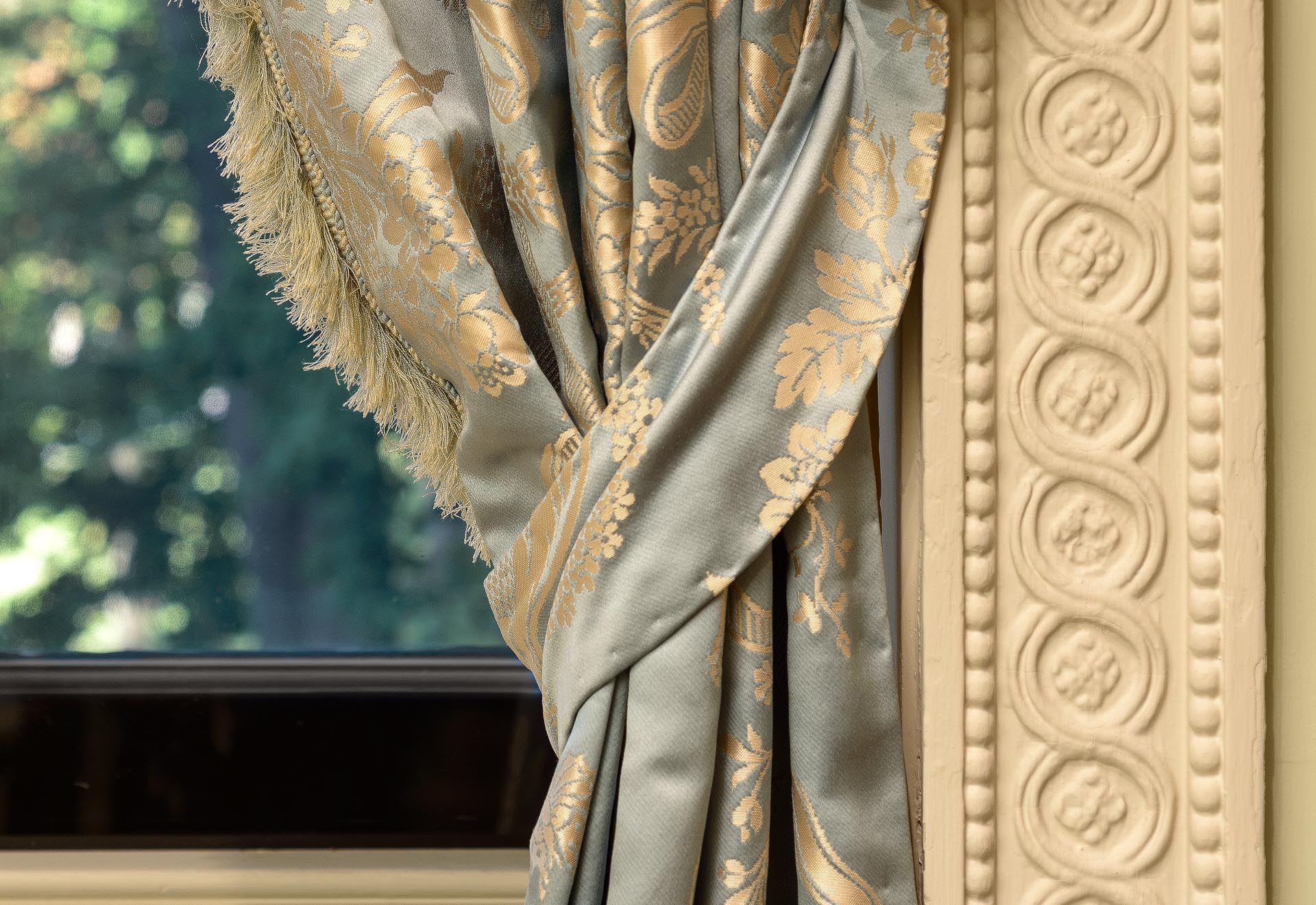
Henry Francis du Pont is one of the great collectors of American decorative arts and among the country’s early interior designers. His canvas was Winterthur, and his vision began with the acquisition of woodwork, ceilings, and floors from historic houses threatened with destruction. Within that framework, du Pont furnished his rooms with antiques, primarily American. His passion for detail in all aspects of decoration extended to the design and execution of his curtain collection. He spent an infinite number of hours looking at paintings, engravings, and books to find the correct representation of each room and was actively involved in selecting the antique textiles, braids, tassels, and fringe.
Du Pont took great care with the placement of furniture and objects in his rooms, striving for symmetry and balance and introducing color and pattern through textiles. He loved the color palettes of printed cottons made fashionable in the early 20th century. As he often noted, “Color is the thing that really counts more than any other.”
Although du Pont’s window treatments evoked the period of the architectural elements in a particular room, the fabrics bore little relation to what was actually used in America from the 1700s to the early 1900s. The dealers that he patronized obtained most of their stock in Europe, where vast quantities of antique fabrics were readily available from the late 19th century onward. Many, if not most, of the textiles used to furnish Winterthur were not seen on this side of the Atlantic until the early 20th century.
The artisans who were most closely associated with fabricating the curtains at Winterthur were employed by the interior design firm of Ernest LoNano, based in New York City. Over the course of the 20th century, their client list included numerous historic houses and museums. The firm’s involvement making curtains, bed hangings, and upholstery covers for the Winterthur house was their largest commission.
Seasonal Changes
It was customary in H. F. du Pont’s day to change the look of a room with seasonal curtains and slipcovers. Room changes and reinstallations were also dictated by du Pont’s acquisition of new furniture and fabrics. The importance of color in the Winterthur Garden played an essential part in the choice of the seasonal interior color schemes. Most textiles were marked with sewn-on labels that identified the months each item was to be used, and many carried labels indicating a particular season (1 to 4), with Season 1 being January to March.
By the 1960s, it was clear to curators that some of the textile furnishings at Winterthur had faded and needed to be replaced, but large quantities of antique fabrics were no longer available. The solution was to change out the damaged textiles with reproductions, and the museum worked closely with the firm of Brunschwig & Fils on numerous replacement projects, adding to the enduring beauty of the Winterthur rooms created by H. F. du Pont, an extraordinary collector and decorator.
Interior designer Sandy Brown is the author of The Well-Dressed Window: Curtains at Winterthur (The Monacelli Press, 2017). Available at the Winterthur Bookstore or by calling 800.448.3883. $50.